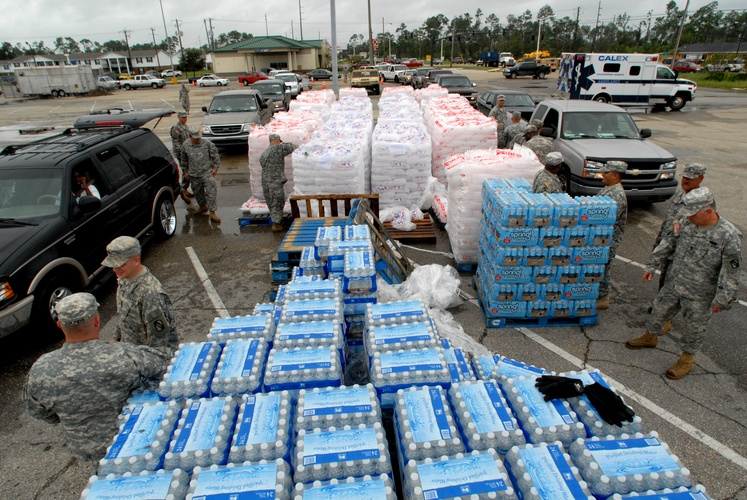Whether an old airframe is on the edge of retirement or a brand-new jet, a robust logistics chain, and parts supply are paramount.
Greenwood Aerospace is your leader in government procurement, aircraft and parts storage and distribution, and military and defense contracting. Our expertise and services include the following:
Procurement of
- Fixed-wing aircraft and associated support
- Aircraft parts & accessories
- Military aircraft parts
- Storage and distribution of parts and supplies to your organization. We will operate as your private warehouse and distribution network.
This is only a sample of our services and capabilities.
Learn more about our services for the defense and military industries. For additional information, you can also contact us here or by emailing sales@governmentprocurement.com.
Everything You Need to Know About Military Standards for Packaging Materials
If there is one thing the military is known for, it’s detailing every single task down to the most excruciating details. When you work on a truck, a trailer, an airplane, or a missile, every task is broken down into tiny, easily digestible pieces. It is not a dig at anyone, but the technical orders used by the military are written in a way (with accompanying sketches) that a 5th grader can comprehend them. The military stands still if its key mobility elements don’t come together properly. Every C-17 in the fleet is worthless if the materials are improperly packaged; they cannot fly safely with improperly packaged materials. We saw this firsthand with the freighter 747 that crashed after takeoff out of Bagram in April 2013. Improper material mooring created an unrecoverable situation. While this is a worst-case scenario, it did happen, and faulty rigging was the cause, which is a part of the packaging process. It really is this serious.
Let’s take a look at the material packaging process and the standards that guide them.
What is The Military Standard of Packaging?
Military standards govern all parts of the military process in logistics and maintenance. There are scores of different standards that must be adhered to that are in all sorts of different disciplines. Military standard packaging are the standards that all items prepared for shipment must meet, and there are lots of them.
But why is this?
Well, it goes back to the aftermath of World War II. During the war, the allied forces often shared spaces, including shipping and movement of materials. The problem was that no country had any uniform dimensions for packing and shipping war materials. This doesn’t sound too big of a deal until you start considering the ramifications.
- Items did not fit uniformly on cargo ships.
- Material did not fit uniformly on cargo aircraft.
- Crates did not fit uniformly on cargo trucks.
- Also, indirectly related to logistics but ammunition, ordinance, artillery shells, machine guns, and everything else was all incompatible across allied forces. The Americans had excess ammunition, so the British couldn’t use it and so on.

The other lesson learned during the two World Wars was that packaging at the time was not hardy enough to survive the rough travel across the Atlantic and Pacific Oceans. The emphasis at the time was on conserving resources for the war effort, but ironically it cost more materials because so much arrived unusable.
While it was horrible because it was war, World War II brought about unparalleled technological achievements in all walks of life. For one, the military realized how important logistics were to the overall war effort. No war could be won without a strong logistical train. But the logistics had to be created in such a way to ensure machinery and men could cross oceans without significant loss in transit.
Initially, the branches of the military set out to create their own standards for shipping, but this proved too problematic, so a joint military standard for packaging material was created which was universal across all forces.
What’s The Significance of Military Standard Packaging?
Look, logistics isn’t really the most exciting part of the military mission…but all of the missions come to a grinding halt without it. Logistics encompasses everything. Fuel, ammunition, munitions, weapons, boots, and food.

If those things don’t get where they are supposed to go, everything stops. You can’t move a convoy with no fuel. You can’t defend or fortify a position when you’re out of ammunition. Bombers are worthless without bombs, and so on. It all starts with military standard packaging. Everything is designed to fit into specific physical parameters in terms of dimension and area. Military transport systems (ships, cargo airplanes, trucks, trailers, etc.) are built to not only move specifically shaped and weighted items consistent with each other but also function interoperably.
Shipping containers must be offloaded from an Air Mobility Command (AMC) jet (C-130, C-17, C-5) or contracted freight aircraft and loaded onto Army trucks for the convoy. Or, it needs to come off of a ship and be ready to roll on out a convoy of trucks or loaded onto jets and then onto trucks.
See, this is why military standards for packaging are so important.
Here’s the thing: irregular packaging slows down everything. Symmetry is everything in the supply system. If you go to any major distribution center and ask what the biggest problems are, it will consistently be irregular freight sizes and quantities. Corporate warehouses and shipping centers have little say about how the freight comes into the warehouse, but they are sending it out more uniformly. If they could consistently control the dimensions of inbound products, it would improve the output.

The military aims to correct this with military standard packaging: they control both the inbound and outbound dimensions and crating of products, making the process much faster and more efficient. Things like adjusting material movement machinery (forklifts, telehandlers, etc.) add up fast when an entire division moves.
But it isn’t just about moving materials quickly and efficiently. The biggest problem during the World Wars was damaged goods. The materials spend significant time on the open waters, rough seas, etc. Poor packaging materials and practices led to the loss of significant materials. This is a major problem for combatant commanders downrange who need full delivery. If they lose 40% of their materials for instance, they cannot conduct their operations as planned.
In short, proper packaging protects goods during shipment.
What Are The Different Military Packaging Guidelines?
Four different considerations must be satisfied:
- Marking
- Palletization
- The protection of electronics
- General packaging practices
Marking
When a unit deploys, they take all kinds of stuff with them. Thousands of items, maybe even hundreds of thousands, and not everything can be transported the same way. Everything shipped must be clearly marked to be sent to the right place upon arrival. If an entire division moves into Iraq as several did in 2003, materials will be shipped on several ships, numerous airplanes, and so on.
Not every marking holds up to the elements, and not all items go to the same place.
Palletization
Thousands of tons of materials are moved, and pallets are a standard way of moving it. MIL-STD-129 and MIL-STD-290 standardize loads to ensure loads are consistently palletized in terms of size, patterns, type, wrapping, and so on.
Protection of Electrical and Electronic Systems and Parts
This is a particularly important process because so much of the military relies heavily on electronic systems. The supply of parts must be protected, and the electrical and electronic systems testing devices must be stored and shipped appropriately.
General Packaging
There are general guidelines that need to be followed by contractors. These guides contain the types and styles of materials to use, where to use them, and so on. MIL-STD-2073, MIL-STD-129, MIL-STD-1686, MIL-STD-3010, and MS20003 are the regulations that detail these practices.

What Are The Different Military Packaging Standards?
Alright, now that we have detailed the reasons for why these standards exist and what they mean, let’s talk about the standards themselves.
The military runs on regulations; every single part of it is broken down and regulated. These are the regulations for military packaging.
1. MIL-STD-129
This is the standard that regulates and specifies markings for use in shipments and storage of supplies. These include
- Labels
- Shipping tags
- Water-resistant envelopes
- Waterproof markings
- Identification barcodes,
- Special handling,
- Ammunition and explosives markings
2. MIL-STD-130
MIL-STD-130 regulates the marking of U.S. military property for identification purposes, and it covers a variety of tagging techniques, including
- commercial and government entity (CAGE) codes,
- the data universal numbering system (D-U-N-S),
- electronic serial numbers (ESN), enterprise identifiers (EIDs),
- human-readable information (MRI),
- national stock numbers (NSNs),
- registration numbers,
- serial numbers,
- text element identifiers,
- and unique item identifiers.
3. MIL-STD-1686
MIL-STD-1686 details the packaging standards for electronics like marking of hardware, packaging, and QA. This is actually a classification guide for electrostatic discharge control (ESD), but military shipping is part of it.
4. MIL-STD-2073
All packaging and marking are detailed in MIL-STD-2073. Items can include items delivered for deployments, items that require a reusable container, etc.
This is an extensive regulation with a lot of subsections including
- Formulas used for establishing military packaging quantity and intermediate container quantity.
- Containers
- Military packaging data forms
- Packaging designs validation
- Packaging QA
- Requirement codes
5. MIL-STD-3010
Packaging has to be tested to ensure it holds up to the standards it needs to hold up to. This is to ensure standardization procedures for packaging which includes:
- Water vapor transmission rates
- Seam strength
- Resistance to puncture
- Blocking resistance
- Curling resistance
- Oil resistance
- Water resistance
- Static decay
- Thickness
6. MIL-I-8835
And finally, humidity indication. MIL-I-8835 is not a standard, but is instead an indicating card to show the humidity level in a specified area. The card changes color depending on the humidity level, so personnel can quickly keep tabs on if an area is too humid.
The MIL-STD-2073-1
MIL-STD-2073-1 is the bible for military packaging. If you need to know what it is, what processes are standard, and what it takes for packaging to meet compliance, it is in the -2073-1.
Also, if vendor items are going into storage for more than six months, packaging must comply with MIL-STD-2073-1.
The purpose of the military packaging standard is to ensure items entering circulation are prepared to be handled, stored, and distributed. Part of this is long-term storage preservation.
Here’s the thing: vendors who don’t meet this standard can have their products rejected for failure to meet an established military packaging standard. If you aren’t sure how to meet these standards, reach out to Greenwood Aerospace and we will gladly help out.
How to Comply with Military Packaging Specifications and Standards
Learning to comply with standard military packaging specifications is a hard process. Thankfully, Greenwood Aerospace has been doing this for many years. We know the intricacies of these military packaging standards and specifications so you don’t have to learn them.
Greenwood Aerospace specializes in government procurement for all branches of the U.S. Military. We understand the unique specifications required to fulfill military contracts, and we designate professionals to oversee MIL-SPEC packaging to meet these requirements.
Final Thoughts
Military packaging has been in a constant state of evolution for decades now, born out of the crucible of hard-fought victories. Logistics is the cornerstone of effective warfighting and packing that keeps military assets preserved and protected and makes sure that materials end up where they need to be, when they need to be there, in the condition they were received in.
Greenwood Aerospace is your trusted partner to ensure that your products meet the strict specifications demanded by the DoD. If you are ready to get your product packaging up to military packaging standards, get in touch with us or start a quote today!


.svg)


.png)


